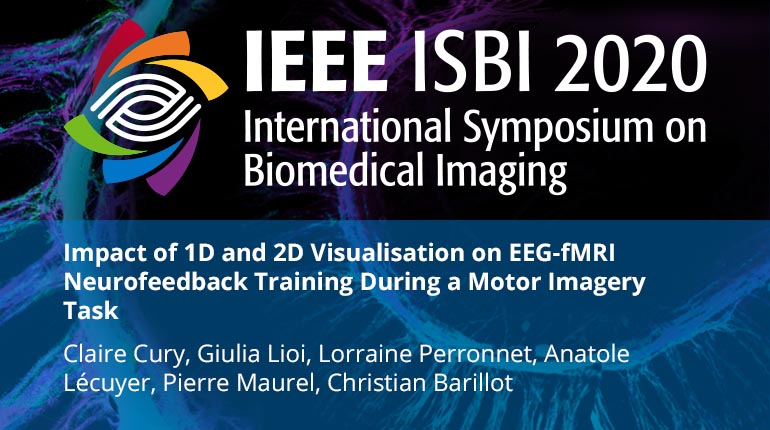
Already purchased this program?
Login to View
This video program is a part of the Premium package:
Impact of 1D and 2D Visualisation on EEG-fMRI Neurofeedback Training During a Motor Imagery Task
- IEEE MemberUS $11.00
- Society MemberUS $0.00
- IEEE Student MemberUS $11.00
- Non-IEEE MemberUS $15.00
Impact of 1D and 2D Visualisation on EEG-fMRI Neurofeedback Training During a Motor Imagery Task
Bi-modal EEG-fMRI neurofeedback (NF) is a new technique of great interest. First, it can improve the quality of NF training by combining different real-time information (haemodynamic and electrophysiological) from the participant's brain activity; Second, it has potential to better understand the link and the synergy between the two modalities (EEG-fMRI). However there are different ways to show to the participant his NF scores during bi-modal NF sessions. To improve data fusion methodologies, we investigate the impact of a 1D or 2D representation when a visual feedback is given during motor imagery task. Results show a better synergy between EEG and fMRI when a 2D display is used. Subjects have better fMRI scores when 1D is used for bi-modal EEG-fMRI NF sessions; on the other hand, they regulate EEG more specifically when the 2D metaphor is used.
Bi-modal EEG-fMRI neurofeedback (NF) is a new technique of great interest. First, it can improve the quality of NF training by combining different real-time information (haemodynamic and electrophysiological) from the participant's brain activity; Second, it has potential to better understand the link and the synergy between the two modalities (EEG-fMRI). However there are different ways to show to the participant his NF scores during bi-modal NF sessions. To improve data fusion methodologies, we investigate the impact of a 1D or 2D representation when a visual feedback is given during motor imagery task. Results show a better synergy between EEG and fMRI when a 2D display is used. Subjects have better fMRI scores when 1D is used for bi-modal EEG-fMRI NF sessions; on the other hand, they regulate EEG more specifically when the 2D metaphor is used.
 Cart
Cart Create Account
Create Account Sign In
Sign In





